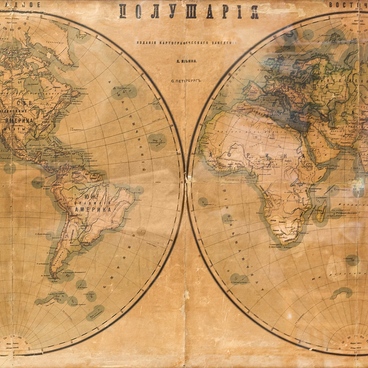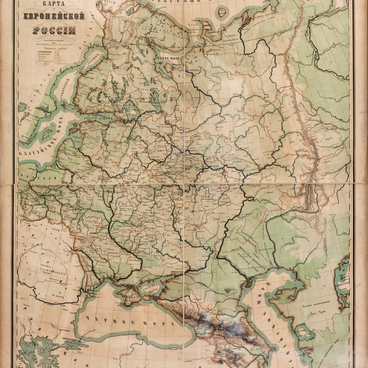Geographic maps on the walls, according to Anna, were the family necessities, like a grand piano and books in the bookcases and on the shelves.
One of the maps on display is called ‘Europe’. This map is physical and partly general geographic by the content — it shows the topography, the appearance of the territory and water areas. It covers the territory of Outer Europe, a swath of North Africa, and the European part of the Russian Empire. The map is an overview one with a small scale of 100 versts to inch, or 42 kilometers to centimeter.
These maps were used for educational and introductory purposes and were commonly acquired for schools, gymnasiums, colleges, and universities in the Russian Empire.
The map shows Europe and the European part of the Russian Empire with physical and geographic features such as rivers, lakes, seas, oceans, bays, and straits. It shows the coastline marked with a bold light-blue stripe. Mountain ranges, plains, and lowlands are colored in layers by height classes. This technique is called hypsographic coloring. The higher points on the map are marked in brown, the map compilers also used beige, dark and light green according to the terrain level.
The map was produced in the second half of the 19th century at the Cartographic establishment of Alexei Ilyin in St. Petersburg. It was founded in 1859 by General Staff officers Alexey Ilyin and Vladimir Poltoratsky. By 1882, the establishment produced up to six million reprints, which were about 90% of the Russian Empire’s civilian cartographic output.



